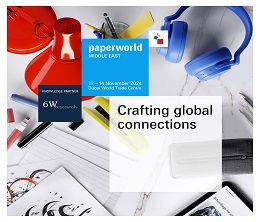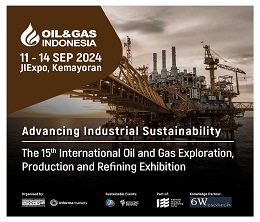Malaysia 3D Printing Materials Market (2024-2030) Outlook | Value, Size, Companies, Forecast, Trends, Industry, Analysis, Revenue, Growth & Share
| Product Code: ETC4496667 | Publication Date: Jul 2023 | Updated Date: Mar 2024 | Product Type: Report | |
| Publisher: 6Wresearch | No. of Pages: 85 | No. of Figures: 45 | No. of Tables: 25 | |
malaysia 3d printing materials market overview
The 3D printing materials market in Malaysia has experienced significant growth owing to the rapid adoption of additive manufacturing technologies across various industries. This market encompasses a diverse range of materials including polymers, metals, ceramics, and composites, each catering to specific applications. The healthcare, automotive, aerospace, and consumer goods sectors are prominent consumers of 3D printing materials. Government initiatives to promote innovation and technological advancements have also played a crucial role in propelling the growth of this market. Additionally, collaborations between research institutions, businesses, and regulatory bodies have contributed to the development of a robust 3D printing ecosystem in Malaysia.
Drivers of the Market
The 3D printing materials market in Malaysia is growing as industries explore additive manufacturing for prototyping and production. Innovations in 3D printing materials, including biocompatible and high-performance options, are driving adoption across various sectors, such as aerospace, healthcare, and automotive. The need for customization, rapid product development, and cost-effective manufacturing are key drivers of this market.
Challenges of the Market
The Malaysia 3D printing materials market faces a set of unique challenges. One of the main issues is the need for a wider selection of materials suitable for 3D printing to meet diverse industry demands. Quality control and material consistency are essential, especially in sectors like aerospace and healthcare. Regulatory compliance, particularly when producing medical or food-grade parts, adds complexity. As 3D printing technology evolves rapidly, staying ahead of the curve and adapting to new materials and methods is an ongoing challenge in this market.
Covid-19 Impact of the Market
The 3D printing materials market in Malaysia faced initial challenges as many manufacturing activities slowed down due to COVID-19. However, the market witnessed resilience and recovery, with increased use of 3D printing in healthcare, aerospace, and automotive sectors to produce essential equipment and parts.
Leading Players of the Market
In the Malaysia 3D Printing Materials market, leading players include Stratasys Ltd., 3D Systems Corporation, and Arkema SA. These companies supply a wide range of 3D printing materials, including filaments and resins, supporting the growth of the additive manufacturing industry in Malaysia. Their materials are known for their quality and versatility, enabling various industries to adopt 3D printing technology.
Key Highlights of the Report:
- Malaysia 3D Printing Materials Market Outlook
- Market Size of Malaysia 3D Printing Materials Market, 2023
- Forecast of Malaysia 3D Printing Materials Market, 2030
- Historical Data and Forecast of Malaysia 3D Printing Materials Revenues & Volume for the Period 2020-2030
- Malaysia 3D Printing Materials Market Trend Evolution
- Malaysia 3D Printing Materials Market Drivers and Challenges
- Malaysia 3D Printing Materials Price Trends
- Malaysia 3D Printing Materials Porter's Five Forces
- Malaysia 3D Printing Materials Industry Life Cycle
- Historical Data and Forecast of Malaysia 3D Printing Materials Market Revenues & Volume By Form for the Period 2020-2030
- Historical Data and Forecast of Malaysia 3D Printing Materials Market Revenues & Volume By Powder for the Period 2020-2030
- Historical Data and Forecast of Malaysia 3D Printing Materials Market Revenues & Volume By Liquid for the Period 2020-2030
- Historical Data and Forecast of Malaysia 3D Printing Materials Market Revenues & Volume By Filament for the Period 2020-2030
- Historical Data and Forecast of Malaysia 3D Printing Materials Market Revenues & Volume By Type for the Period 2020-2030
- Historical Data and Forecast of Malaysia 3D Printing Materials Market Revenues & Volume By Plastic for the Period 2020-2030
- Historical Data and Forecast of Malaysia 3D Printing Materials Market Revenues & Volume By Metal for the Period 2020-2030
- Historical Data and Forecast of Malaysia 3D Printing Materials Market Revenues & Volume By Ceramic for the Period 2020-2030
- Historical Data and Forecast of Malaysia 3D Printing Materials Market Revenues & Volume By End Use Industry for the Period 2020-2030
- Historical Data and Forecast of Malaysia 3D Printing Materials Market Revenues & Volume By Automotive for the Period 2020-2030
- Historical Data and Forecast of Malaysia 3D Printing Materials Market Revenues & Volume By Aerospace & Defence for the Period 2020-2030
- Historical Data and Forecast of Malaysia 3D Printing Materials Market Revenues & Volume By Healthcare for the Period 2020-2030
- Historical Data and Forecast of Malaysia 3D Printing Materials Market Revenues & Volume By Consumer Goods for the Period 2020-2030
- Historical Data and Forecast of Malaysia 3D Printing Materials Market Revenues & Volume By Construction for the Period 2020-2030
- Malaysia 3D Printing Materials Import Export Trade Statistics
- Market Opportunity Assessment By Form
- Market Opportunity Assessment By Type
- Market Opportunity Assessment By End Use Industry
- Malaysia 3D Printing Materials Top Companies Market Share
- Malaysia 3D Printing Materials Competitive Benchmarking By Technical and Operational Parameters
- Malaysia 3D Printing Materials Company Profiles
- Malaysia 3D Printing Materials Key Strategic Recommendations
Frequently Asked Questions About the Market Study (FAQs):
1 Executive Summary |
2 Introduction |
2.1 Key Highlights of the Report |
2.2 Report Description |
2.3 Market Scope & Segmentation |
2.4 Research Methodology |
2.5 Assumptions |
3 Malaysia 3D Printing Materials Market Overview |
3.1 Malaysia Country Macro Economic Indicators |
3.2 Malaysia 3D Printing Materials Market Revenues & Volume, 2023 & 2028F |
3.3 Malaysia 3D Printing Materials Market - Industry Life Cycle |
3.4 Malaysia 3D Printing Materials Market - Porter's Five Forces |
3.5 Malaysia 3D Printing Materials Market Revenues & Volume Share, By Form, 2023 & 2028F |
3.6 Malaysia 3D Printing Materials Market Revenues & Volume Share, By Type, 2023 & 2028F |
3.7 Malaysia 3D Printing Materials Market Revenues & Volume Share, By End Use Industry, 2023 & 2028F |
4 Malaysia 3D Printing Materials Market Dynamics |
4.1 Impact Analysis |
4.2 Market Drivers |
4.3 Market Restraints |
5 Malaysia 3D Printing Materials Market Trends |
6 Malaysia 3D Printing Materials Market, By Types |
6.1 Malaysia 3D Printing Materials Market, By Form |
6.1.1 Overview and Analysis |
6.1.2 Malaysia 3D Printing Materials Market Revenues & Volume, By Form, 2020 - 2028F |
6.1.3 Malaysia 3D Printing Materials Market Revenues & Volume, By Powder, 2020 - 2028F |
6.1.4 Malaysia 3D Printing Materials Market Revenues & Volume, By Liquid, 2020 - 2028F |
6.1.5 Malaysia 3D Printing Materials Market Revenues & Volume, By Filament, 2020 - 2028F |
6.2 Malaysia 3D Printing Materials Market, By Type |
6.2.1 Overview and Analysis |
6.2.2 Malaysia 3D Printing Materials Market Revenues & Volume, By Plastic, 2020 - 2028F |
6.2.3 Malaysia 3D Printing Materials Market Revenues & Volume, By Metal, 2020 - 2028F |
6.2.4 Malaysia 3D Printing Materials Market Revenues & Volume, By Ceramic, 2020 - 2028F |
6.3 Malaysia 3D Printing Materials Market, By End Use Industry |
6.3.1 Overview and Analysis |
6.3.2 Malaysia 3D Printing Materials Market Revenues & Volume, By Automotive, 2020 - 2028F |
6.3.3 Malaysia 3D Printing Materials Market Revenues & Volume, By Aerospace & Defence, 2020 - 2028F |
6.3.4 Malaysia 3D Printing Materials Market Revenues & Volume, By Healthcare, 2020 - 2028F |
6.3.5 Malaysia 3D Printing Materials Market Revenues & Volume, By Consumer Goods, 2020 - 2028F |
6.3.6 Malaysia 3D Printing Materials Market Revenues & Volume, By Construction, 2020 - 2028F |
7 Malaysia 3D Printing Materials Market Import-Export Trade Statistics |
7.1 Malaysia 3D Printing Materials Market Export to Major Countries |
7.2 Malaysia 3D Printing Materials Market Imports from Major Countries |
8 Malaysia 3D Printing Materials Market Key Performance Indicators |
9 Malaysia 3D Printing Materials Market - Opportunity Assessment |
9.1 Malaysia 3D Printing Materials Market Opportunity Assessment, By Form, 2023 & 2028F |
9.2 Malaysia 3D Printing Materials Market Opportunity Assessment, By Type, 2023 & 2028F |
9.3 Malaysia 3D Printing Materials Market Opportunity Assessment, By End Use Industry, 2023 & 2028F |
10 Malaysia 3D Printing Materials Market - Competitive Landscape |
10.1 Malaysia 3D Printing Materials Market Revenue Share, By Companies, 2023 |
10.2 Malaysia 3D Printing Materials Market Competitive Benchmarking, By Operating and Technical Parameters |
11 Company Profiles |
12 Recommendations |
13 Disclaimer |
- Single User License$ 1,995
- Department License$ 2,400
- Site License$ 3,120
- Global License$ 3,795
Search
Related Reports
- Bus Market (2024-2030) | Trends, Size, Value, Forecast, Growth, Share, Companies, Analysis, Revenue & Industry
- Canned Food Market (2024-2030) | companies, industry, Size, Share, Revenue, Forecast, Trends, Analysis, Growth, Value, Outlook
- India Video Surveillance Market (2024-2030) | Size, industry, Share, Trends, Revenue, Analysis, Forecast, Growth, Value, Outlook
- India Air Conditioner (AC) Market (2024-2030) | Share, Size, Growth, Industry, Segmentation, Trends, Value, Revenue, Analysis & Outlook
- Poland Printing Market (2024-2030) | Trends, Companies, Share, Industry, Value, Growth, Analysis, Outlook, Forecast, Size & Revenue
- Argentina Data storage devices Market (2024-2030) | Size, Share, Industry, Trends, Growth, Value, Revenue, Analysis & Outlook
- UAE Cyber Security Market (2024-2030) | industry, Size, Share, Revenue, Analysis, Forecast, Growth, Trends & Outlook
- Professional Headset Market (2024-2030) | Companies, Outlook, Trends, Value, Forecast, Size, Analysis, Share, Growth, Revenue & Industry
- Polyurethane Market (2024-2030) | Trends, Companies, Analysis, Size, Share, Industry, Revenue, Outlook, Forecast, Value & Growth
- Orphan Drugs Market (2024-2030) | Outlook, Revenue, Value, Companies, Analysis, Size, Share, Forecast, Industry, Growth & Trends
Industry Events and Analyst Meet
Our Clients
Whitepaper
- Middle East & Africa Commercial Security Market Click here to view more.
- Middle East & Africa Fire Safety Systems & Equipment Market Click here to view more.
- GCC Drone Market Click here to view more.
- Middle East Lighting Fixture Market Click here to view more.
- GCC Physical & Perimeter Security Market Click here to view more.
6WResearch In News
- India's Printer Market Faces 20.7% Decline in Q4 2023: Epson and HP Lead Amidst Downturn
- India's Camera Market Sees 8.9% Decline in Q4 2023; Canon Leads with 38.4% Share
- Doha a strategic location for EV manufacturing hub: IPA Qatar
- Demand for luxury TVs surging in the GCC, says Samsung
- Empowering Growth: The Thriving Journey of Bangladesh’s Cable Industry
- The future of gaming industry in the Philippines













